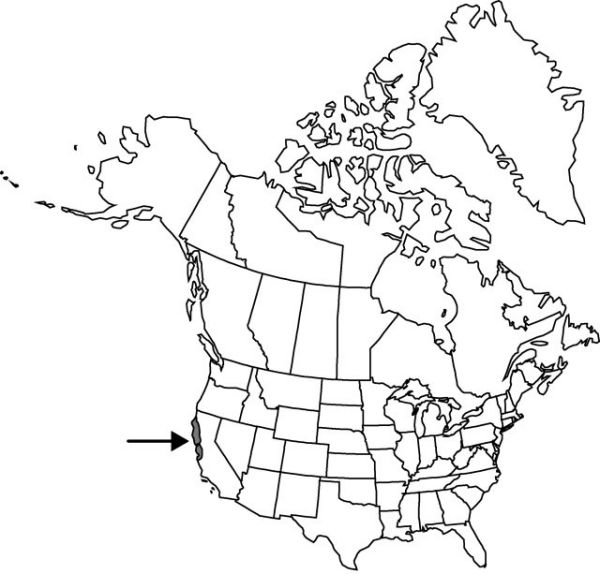Triteleia peduncularis
Edwards’s Bot. Reg. 20: under plate 1685. 1835.
Leaves 20–40 cm × 5–15 mm. Scape 10–80 cm, smooth. Flowers: perianth white, often flushed violet or lilac abaxially, 15–28 mm, tube broadly funnelform-campanulate, acute at base, 7–11 mm, lobes 10–16 mm; stamens attached alternately at 2 levels, unequal, those of proximal row shorter; filaments nearly linear, slightly wider at base, 1–1.5 or 2–3 mm, apical appendages absent; anthers white, 2–4 mm; ovary bright yellow in flower, equal to stipe; pedicel 2–10(–18) cm. 2n = 14, 28.
Phenology: Flowering spring (May–Jul).
Habitat: Low fields, wet grasslands, vernal streams and pools, closed cone pine forests, mixed evergreens, foothill woodlands, often on serpentine
Elevation: 0–800 m
Discussion
Triteleia peduncularis has a wide distribution in the northern California Coast Ranges, but it is usually not common and is quite rare south of San Francisco. The yellow ovary contrasts notably with the white perianth. The long-ascending pedicels are also distinctive. Triteleia ×tubergenii L. W. Lenz is a cultivated amphidiploid hybrid between T. laxa and T. peduncularis (L. W. Lenz 1970).
Selected References
None.
